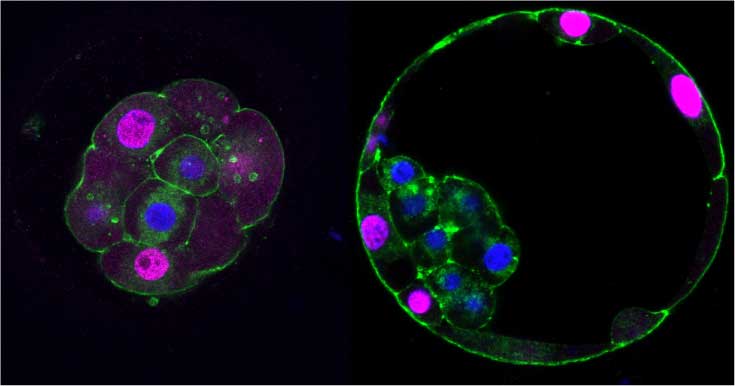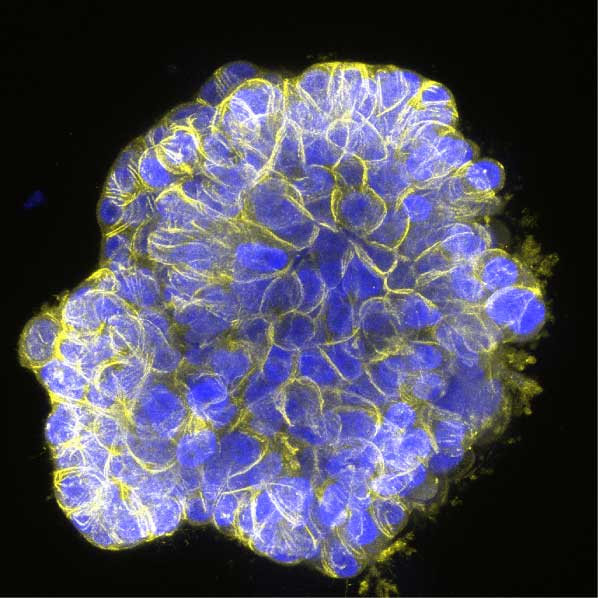During the first days after fertilization and prior implantation, the mammalian zygote develops into a blastocyst that comprises an outer layer of trophectoderm (TE) enclosing the blastocyst cavity in which a population of inner cell mass (ICM) resides. The ICM contains two types of cells, the epiblast and the hypoblast, which, respectively, contribute to cells of the embryo proper and the extraembryonic membranes of the conceptus. On the other hand, the TE gives rise to the trophoblasts of the placenta, which, at implantation, are essential to establish a proper connection with the maternal uterine environment. This is a unique and poorly studied biunivocal process underlined by a sophisticated crosstalk between two distinct organisms: the fetus and the mother. The embryonic trophoblast cells and the maternal tissues become one functional organ, which is essential for the provision of embryotrophic support and further development of the embryo inside the body.
Current understandings of cell specification in early mammalian preimplantation development are based primarily on mouse studies. Recent gene-expression analyses suggest that the mechanisms regulating early cell fate decisions in the mouse may differ in other mammals, including human and cow. Our recent comparative embryology analysis provided insights into early lineage specification and suggests that a similar molecular mechanism initiates the TE program in human, cow and mouse embryos. However, we and others have also uncovered important differences in the expression of key specification factors in the blastocyst, which suggest alternative, and possibly, species-specific mechanisms involved in trophoblast differentiation and placenta development (Gerri et al., Nature, 2020 and Gerri, Menchero et al., Annual Review of Cell and Developmental Biology, 2020). We will continue working on mammalian preimplantation embryos to understand the evolutionary conservation or divergence of key molecular processes involved in the formation of TE and trophoblasts in the embryo. This could lead us to find novel and species-specific mechanisms of cell fate decisions in different animal models, that would help us link the morphological variation of the placenta with early specification events.
Methodological and technical expertise:


For a proper placenta development, the embryo and the maternal tissues engage in a crosstalk with the purpose to develop a stable connection between fetus and mother. In this complex process, trophoblasts and maternal cells influence each other’s behaviour. Among others, the interaction with the maternal vasculature in a physiological microenvironment is fundamental to establish a proper maternal support to the fetus, and defects in this process might lead to pathological scenarios, such as pre-eclampsia.
Building on a unique set of expertise available in the lab in placenta differentiation (Gerri et al., Nature, 2020), microenvironmental adaptation, vascular biology and tissue-tissue interactions (Gerri et al., Nature Communications, 2017 and Gerri, Marass et al., Blood, 2018), we aim to utilize a novel in vitro multicellular system to define the nature of the human fetal-maternal crosstalk. We will be able to address fundamental questions, such as: how do fetal cells and maternal endothelial cells communicate using embryocrine/angiocrine signals? and how do they influence each other, cooperating to build one functional organ indispensable for the organism?
In the future, we also plan to study these vasculo-placental interactions using assembloids from different mammalian species, with the aim to understand the molecular bases underlying the various species-specific placentation strategies occurring during evolution.
Methodological and technical expertise: